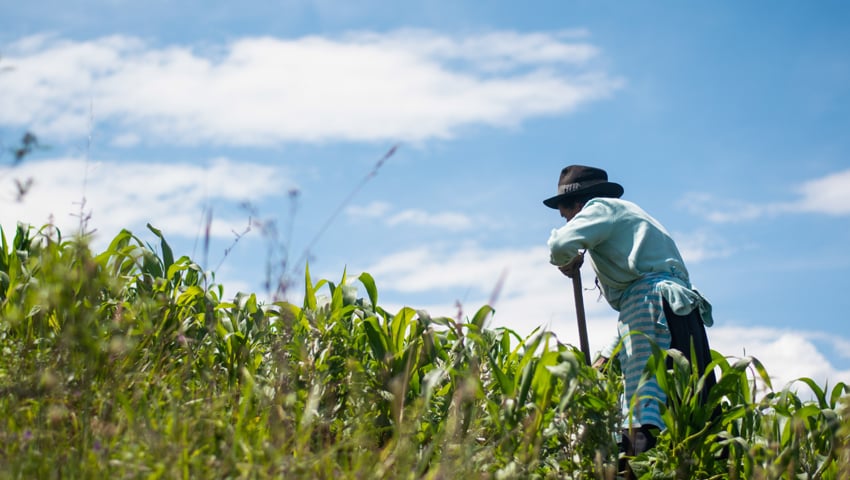The Great Food Puzzle, a new tool and research published by WWF, helps to identify the most appropriate actions on a national basis.
The report highlights that food systems – the complex network of activities that involves the production, processing, transportation, and consumption of food – have major global impacts on nature and climate change, but they can only be made sustainable with local solutions.
In the first global study of its kind, WWF has analysed more than 100 countries and classified them into six different Food System Types, based on their environmental and socioeconomic characteristics, and ranked the highest-impact actions in each. The inclusion of environmental factors sets the study apart from other food system typologies.
A WWF spokesperson said, “Is that it is critical that the Food System Types are considered, given food systems’ widespread impact on nature and total dependence on a functioning natural world.” The WWF Food System Types are listed below.
Brent Loken, Global Food Lead Scientist at WWF, said, “Food systems are extremely complex and are shaped by lots of factors including cultural heritage, values and local contexts. That means there are no silver bullets that will work everywhere and reverse the devastating impact that current food systems have on nature and human health.
“The Great Food Puzzle approach helps all stakeholders to identify science-based actions based on local context, or place-based solutions, that will deliver the biggest wins for people and planet in the shortest time.”
While there is no single set of policy interventions that should be applied globally, the research revealed a consistent need across all countries to optimise land use and restore biodiversity, improve education and knowledge on healthy and sustainable diets, and to redesign financial subsidies and incentives.
These actions have high-impact potential across all Food System Types (named 1-6 to avoid biases or preconceptions), but they are not necessarily the top three actions for all countries. Although there are some similarities, there are notable differences between priority actions in different Food System Types.
For instance, the greatest potential for adopting high-tech methods is in Type 4 countries, including Mexico, China, UAE, Spain and South Africa.
There is already significant industrialisation in these food systems but they also face the highest levels of water risk, particularly with forecast climate change impacts in mind.
High-tech methods that can preserve access to clean and safe water, such as the use of controlled environments for food production or desalinating salt water for irrigation, are likely to be of great importance.
Whereas in Type 5 countries, including the US, UK, Netherlands, Germany and Japan, strengthening existing commitments and implementation has higher potential. These countries frequently have regulations or agreements in place, but the implementation is often lacking. Rather than developing new solutions, delivering on commitments that already exist would be highly impactful.
Meanwhile, there is higher potential in promoting traditional foods (like nuts, legumes and nutri-cereals) in Type 2 (including Ethiopia, the Philippines and Viet Nam) and Type 4 (including Mexico, South Africa and China) countries – many of which are moving away from healthy and sustainable food cultures and are seeing increased consumption of ultra-processed and animal-based foods.
Loken said, “There are many examples of countries already applying the highest-impact actions. Moving forward, the Great Food Puzzle approach will help to accelerate the incredible food system transformation that is already underway. By finding place-based solutions and building coalitions of actors who can learn from each other and share solutions and stories of success, we have the opportunity to create healthy and sustainable food systems for all.”
Food System Type examples:
Ecuador (Type 1) – Developing nature-positive supply chains – Working with Indigenous Ecuadorian communities to strengthen traditional cocoa production practices, implementing a deforestation-free traceability system, and establishing a long term supply chain with a German company, ensuring the farmers get a fair price for the cocoa beans and products.
PHILIPPINES (Type 2) – Developing supply chain infrastructure – Creating SoilMate, an innovative mobile application that makes composting of food waste easier, faster and safer for businesses and residents in Manila, to keep food waste out of landfill and provide organic fertilizers to local farmers.
Kenya (Type 3) – Supporting smallholders – Establishing an alternative market owned and run by local farmers in the Naivasha Basin, to break reliance on brokers, minimise food losses suffered while food was transported to cities, and increase the availability of healthy and sustainable food available to rural communities.
South Africa (Type 4) – Adopt high-tech methods – Implementing an Artificial Intelligence-powered early warning system that can prevent whales from becoming entangled in ropes used to grow muscles in aquaculture farms close to the West Coast National Park.
USA (Type 5) – Promoting public awareness – Establishing an education programme that turns cafeterias into classrooms, empowering them to measure and reduce food waste and even introduce State legislation that increases funding for food waste reduction systems in school.
Argentina (Type 6) – Optimising land use – Partnering with ranchers in Las Pampas to implement sustainable livestock management practices that improve soil and water health, increase biodiversity and deliver significant economic benefits to ranchers.
